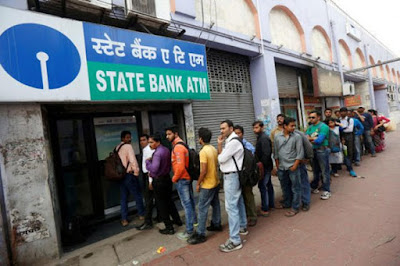Why You Can’t Withdraw the Rs 200 Note From an ATM Anytime Soon : Shaikh Inside
Why You Can’t Withdraw the Rs 200 Note From an ATM Anytime Soon : Shaikh Inside
As of 4 January 2017, the Reserve Bank of India has ordered banks to recalibrate all 2.2 lakh ATMs across the country to ensure the dispensation of the new, yellow Rs 200 notes. Even though the new note was introduced in the market in August 2017, it remains somewhat of a novelty and available only with banks because of its size! Its dimensions (66 mm x 146 mm) are different from the existing currency in circulation, including the new Rs 500 and Rs 2000, due to which ATMs have to be recalibrated.
After demonetisation in November 2016, banks went through a complete overhaul of all ATMs, having had to recalibrate the trays which hold and dispense notes inside the machine to fit the new dimensions of the Rs 500 and Rs 2000 note. This led to months of despair and disruption as people were unable to access their money easily and instead had to endure long lines in banks to withdraw the new notes and exchange their demonetised currency.
In that context, what is the RBI’s game plan in releasing yet another note of a different dimension which does not fit into any ATMs as is? Is there one at all?
While we have no answers from the central bank on this front, it is clear that a nationwide recalibration of all ATMs is not as easily achieved as the word is thrown around. This time around, it could take over Rs 100 crore and almost six months before ATMs begin dispensing the brightly hued Rs 200.
India is all set to get Rs 200 notes for the first time ever with a print of the Sanchi Stupa in Madhya Pradesh on the back.
Size Matters
A bank official from Union Bank of India familiar with the matter hailed this directive by the RBI as positive since currently only very big denominations are available, change for which is often hard to find for day-to-day transactions. “But it is no small task. They’ve given us the direction now, but it will take at least 6-7 months and more than Rs 100 crore to recalibrate all ATMs once again.”
However, two bank officials from State Bank of India estimate that the new Rs 200 note should be available in ATMs in the next three months.
There, they face another issue directly at odds with RBI’s directive. Speaking to MoneyControl, one SBI bank official said:
Supply is an issue. There aren’t enough notes for us to deploy at ATMs, We have asked RBI to increase the supply.
The official added that while the supply is getting better in states like Tamil Nadu and Madhya Pradesh, it is only in Maharashtra and Bihar that supply of the new notes is adequate enough to even feed into ATMs after recalibration.
Through this move, the RBI is looking to bring down the average withdrawal amount from ATMs, which increased in the last year due to the dispensation of the new Rs 2000 and Rs 500 notes almost exclusively. ET’s data shows that people withdrew Rs 2.44 lakh crore at the end of September 2017 against Rs 2.22 lakh crore in September 2016.
This move comes at a time when demonetisation is facing harsh criticism since one of its main objectives – to curb corruption – is being defeated by the high circulation of Rs 2000 notes.
The Herculean Task Ahead
A quick crash course on the workings of an ATM:
Currently, each ATM has four trays. Each tray can hold up to 2,500 notes. Two trays are exclusively used to dispense Rs 100 and Rs 500 notes depending on the demand of the location. The other two are calibrated to hold Rs 2,000 notes, with ‘spacers’ installed to adjust the currency size for Rs 100 and Rs 500 notes.
This exercise would require one-two engineers to physically visit each ATM and install new spacers on one of the trays to accommodate the Rs 200 notes’ dimensions. Before this, banks have to ensure there is enough supply of the note to run the ATMs at full capacity.Several bank officials have told the media that the total recalibration cost would be between roughly Rs 100-120 crore, borne by the banks to the benefit of third-party ATM operators like NCR and Hitachi. The average cost per ATM would be Rs 4,000-5,000. In addition to the 2.2 lakh ATMs, there are an additional 30,000 cash recyclers (machines which both accept and dispense money) in India which need to be recalibrated.Without the urgency of demonetisation, little progress has been made until now.The 200 denomination supply has to be taken care of. Banks have come to us asking us to calibrate the cassettes of Rs 200 notes so wherever there is supply, we have started doing it.According to reports, NCR Corporation – which owns more than half of all ATMs in the country – has managed to recalibrate approximately 1,000 ATMs for a handful of banks until now. However, Navroz Dastur, Managing Director of NCR Corp, was optimistic when he told Economic Times that this time around, the entire recalibration process should take only 90 days since it can be planned well and executed.After demonetisation, it took more than four weeks to recalibrate all ATMs after engineers worked day and night in extra long shifts. This time it will take at least 5-6 months.
Join the ShaikhInside Community on Social Media
Connect with me on Social Media




Comments